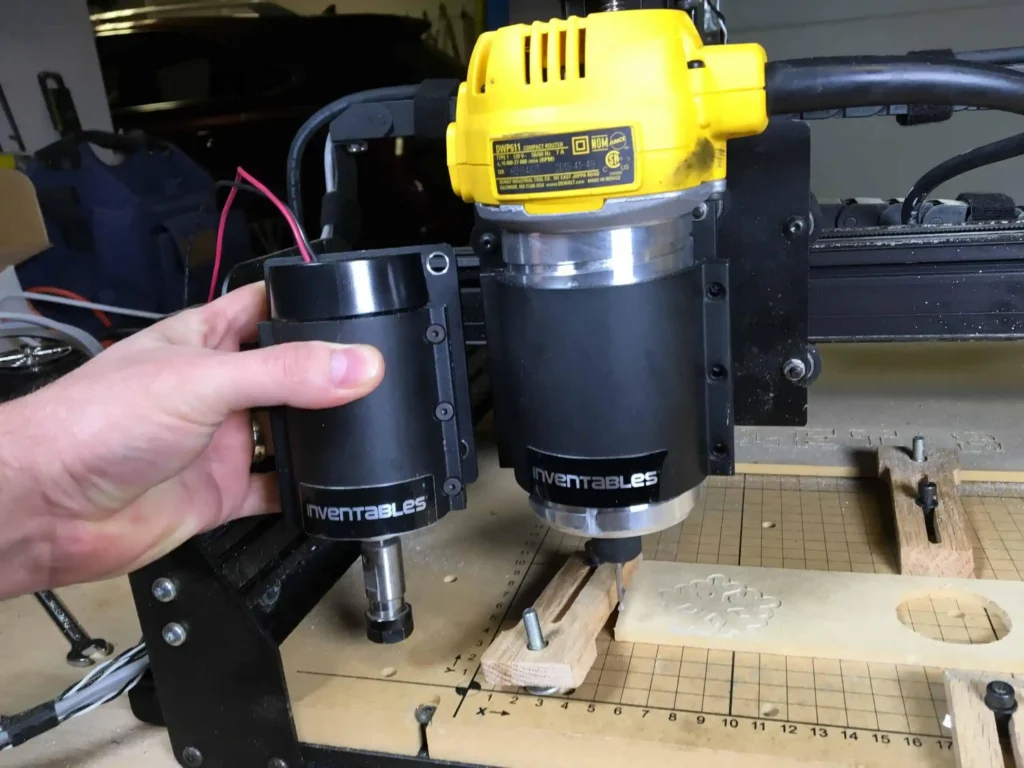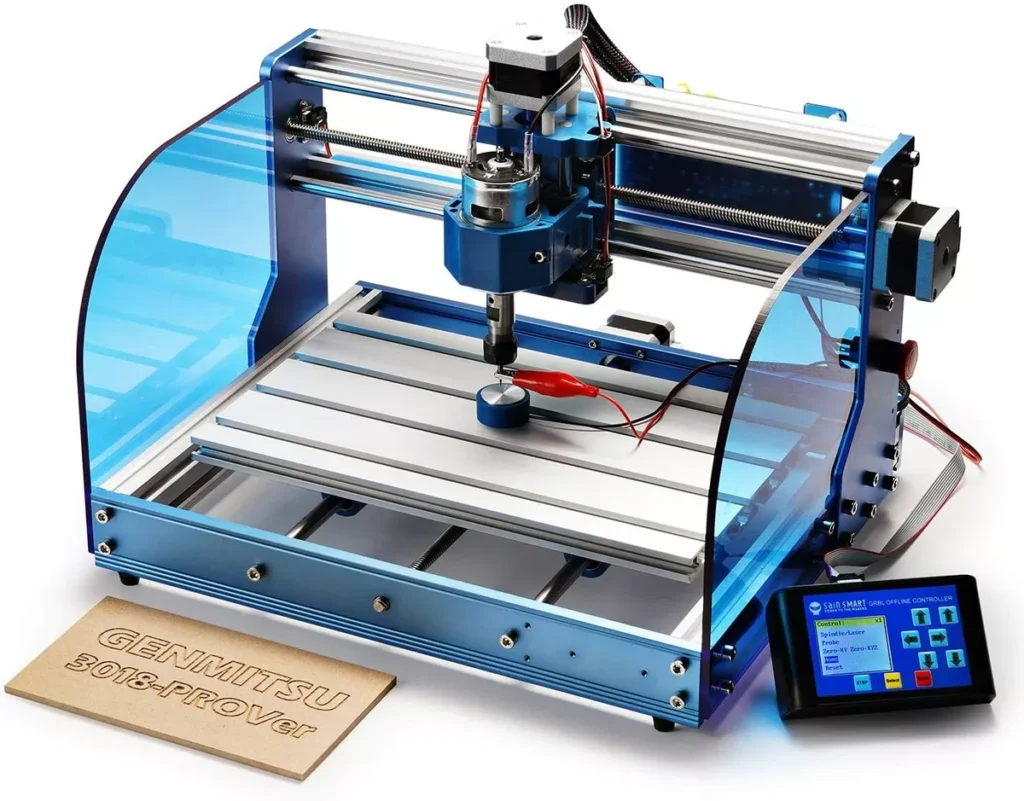I vividly remember my first visit to the machine shop at my university. Walking in, I was struck by the sheer scale of the machines—massive, industrial-grade tools capable of producing parts for virtually any project. This experience laid the foundation for my deep fascination with machining and tools. Since then, my passion for using tools, solving problems, and designing has driven me to gradually build my own workshop in the convenience of my home garage.
Over the years, I’ve curated a collection of tools and machines that enable me to tackle a broad range of projects across various domains. My workshop is a mix of general tools, like drills, screwdrivers, wrenches, hammers, and saws—essentials for any DIY enthusiast—as well as more specialized equipment. From a Mitre Saw and Table Saw for woodworking to a 3D Printer for design prototyping, a Soldering Station for electrical work, and even a MIG Welder for automotive projects, my garage has become a hub of creativity and problem-solving. My reputation is as the guy in the neighbourhood who is always doing something wacky in the garage inviting everyone’s curiosity.
Recently, while working on my woodworking projects and drawing inspiration from talented woodworkers like Jay Bates, I decided to embark on a project that was beyond my current capabilities: creating the most beautiful inlay end grain cutting boards available on the market. My goal was to design and craft custom cutting boards with intricate patterns, elevating them from functional kitchen tools to decorative pieces.

However, I quickly ran into a significant obstacle. To achieve the intricate patterns I envisioned, I needed access to a CNC machine capable of precisely cutting the outlines of these designs. This would allow me to seamlessly blend different types of wood into a single, cohesive piece. Unfortunately, I didn’t own a CNC machine, and when I reached out to service providers, I was quoted hundreds of dollars for a single board that required less than 30 minutes of CNC time.
So like every tool enthusiast and questioned man, I decided to spend a few thousand dollars to make my own CNC, then to spend a few hundreds paying someone else to do the job for me. This decision led me to embark on a well-documented, open-source CNC project, with the hope of sharing my journey with others who, like me, dream of building their own machines.
Introduction
When I started this project, I didn’t have a concrete plan for what I wanted. I only knew that I needed a machine capable of more than just woodworking. Ideally, I wanted a CNC that could also handle aluminum, as this would open up a world of possibilities for future projects requiring custom aluminum parts.
I began by researching existing CNC models from companies like AVID, Laguna Tools, and Next Wave CNC. I also spent countless hours browsing Reddit and OpenCNC blogs, absorbing information on various components, design philosophies, and user experiences. This research gave me a clearer idea of my project requirements and how I wanted to approach building my CNC.
To maintain clarity and a structured approach, I’ll be sharing my insights on CNCs and how they apply to my project through a series of articles. This will provide a comprehensive understanding of the considerations involved in choosing and designing a CNC machine. In this first blog, I’ll delve into the key differences between hobbyist and professional CNCs, highlighting what I’ve learned along the way.
Comparing Hobbyist and Professional CNC Machines
Build Materials
When comparing hobby CNC machines to professional ones, several key differences arise, reflecting the distinct needs and expectations of their users. At the heart of these differences is the construction material and build quality. Hobby CNC machines, such as the Shapeoko or X-Carve, are typically constructed from lighter, more affordable materials like wood, MDF, or aluminum extrusions. These materials make the machines accessible and easy to assemble, but they also limit their rigidity and durability, which can impact long-term performance.


In contrast, professional CNC machines, like those from MecaNumeric or DMG MORI, are built from heavy-duty materials such as steel, cast iron, or high-grade aluminum. This ensures that these machines are not only more robust but also capable of withstanding the stresses of continuous, high-precision operation in demanding industrial environments.
Precision and Accuracy
Precision and accuracy are other areas where the differences are stark. Hobby CNCs can achieve respectable levels of accuracy—sufficient for most woodworking projects and light metalwork—but they generally cannot match the fine tolerances required for high-end applications. Machines like the BobsCNC E4, while popular among hobbyists, typically offer tolerances in the range of 0.1mm to 0.2mm, which may not be adequate for more complex tasks. Professional CNCs, on the other hand, are designed for extreme precision, often achieving tolerances within microns. This level of accuracy is essential in industries like aerospace or medical device manufacturing, where even the smallest deviation can lead to significant issues. Machines like the DMG MORI DMU series exemplify this level of precision, ensuring that they can meet the exacting standards of these high-stakes industries.
Power & Spindle Capabilities
Hobby CNCs generally feature lower spindle power, typically ranging from 0.5kW to 2.2kW. This makes them suitable for working with softer materials like wood, plastics, and light metals but less capable when it comes to harder materials. For example, the X-Carve’s 611 router provides about 0.7kW of power, which is sufficient for lighter tasks but would struggle with more demanding materials.


In contrast, professional CNCs are equipped with powerful spindles, often exceeding 3kW, which allows them to efficiently machine tough materials like steel and titanium. The Mazak Variaxis series, for instance, features spindles with power ranging from 7.5kW to over 15kW, enabling these machines to handle complex and high-precision tasks with ease.
Speed & Efficiency
Speed and efficiency are also areas where professional CNCs outshine their hobby counterparts. While hobby CNCs like the Ooznest WorkBee can operate at decent speeds for tasks such as wood and plastic machining, they are not built for the high-speed, continuous operation required in industrial settings. Professional CNCs, such as the Haas Super Mini Mill, are designed to operate continuously at high speeds, making them ideal for production environments where efficiency is critical. These machines not only maintain high precision but also ensure that large production runs can be completed quickly and reliably.
Work Area
The size and work area of CNC machines also differ significantly between hobbyist and professional models. Hobby CNCs typically have smaller work areas, suitable for personal projects or small-scale production. The X-Carve, for example, offers a work area of around 750mm x 750mm, which is adequate for most hobbyist needs but limited for larger or more complex projects.

In contrast, professional CNCs often feature much larger work areas, like the Haas VF-3, which has a work area of 1016mm x 508mm, or the ShopSabre IS510, which boasts an expansive 10′ x 5′ (3048mm x 1524mm) work area. This larger work area is essential for machining large parts or multiple components simultaneously, making it ideal for industrial-scale production and tasks like processing full sheets of plywood. Such capabilities are crucial in environments where efficiency and the ability to handle large materials are paramount.
Cost
Cost is perhaps one of the most obvious differences between hobby and professional CNCs. Hobby CNCs are generally affordable, ranging from a few hundred to a few thousand dollars, making them accessible to enthusiasts and small businesses. The Sainsmart Genmitsu CNC, for instance, is priced under $500, providing a low entry point for those new to CNC machining.


Professional CNCs, however, come with a much higher price tag, often starting at tens of thousands of dollars and going up to hundreds of thousands for more advanced models. This higher cost reflects the superior build quality, precision, and advanced features of these machines. For example, the Haas VF Series CNC machines start at around $50,000, with prices increasing based on configuration and additional features.
Achieving Professional-Level Performance on a Budget
Building a CNC machine that delivers performance close to professional models while staying within the budget of entry-level hobby machines is a challenging yet achievable goal. This endeavor requires a combination of creativity, technical expertise, and a strategic approach to sourcing parts. By drawing inspiration from high-end CNC machines, we can identify the key features and capabilities that contribute to their superior performance. However, instead of simply replicating these features, we must adapt and innovate, finding cost-effective alternatives and making thoughtful compromises without sacrificing the machine’s essential functionality.
Careful consideration of each component—from the frame materials to the spindle selection, and from the drive systems to the software—ensures that the machine is not only capable but also optimized for the tasks it will perform. This approach involves balancing the need for precision, power, and durability with the realities of budget constraints, all while maintaining a clear focus on the end goal: a CNC machine that punches above its weight, offering performance that rivals much more expensive systems.
In the next few articles, we will delve deeper into the specific parameters that define a great CNC machine. We’ll explore structural requirements, power and speed considerations, drive systems, and the importance of software in achieving precision and efficiency. Each of these aspects will be examined in detail, providing you with the knowledge and insights needed to make informed decisions as you design and build your own CNC machine. Stay tuned as I continue to explore the world of CNC and share my findings, challenges, and successes along the way. Whether you’re a seasoned machinist or a hobbyist like me, I hope this journey will inspire you to take on your own projects and push the boundaries of what’s possible in your workshop.